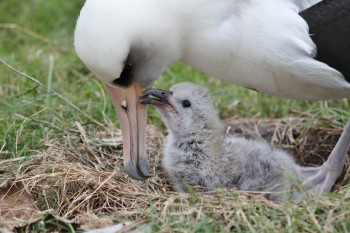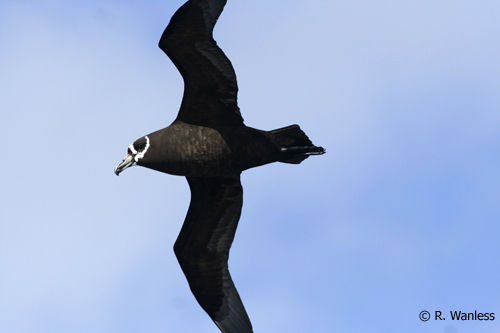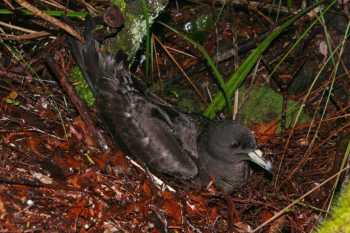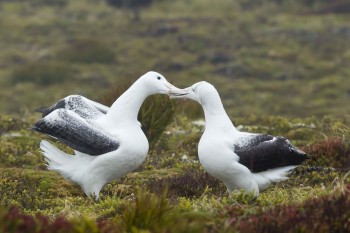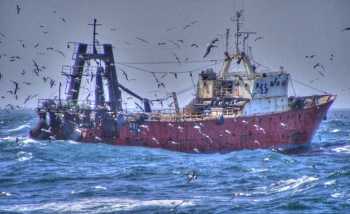Hugh Powell has authored an article on the Near Threatened Laysan Albatross Phoebastria immutabilis in the 2014 Summer Edition of the magazine Living Bird, published by the USA's Cornell Lab of Ornithology.
The illustrated article, also available open-access online, describes the past and current conservation status of the Laysan Albatross and gives information on “How You Can Help”. This section gives links to websites, covering such matters as recycling plastic items, asking for sustainable seafood in restaurants, visiting a breeding colony or watching albatrosses at sea, reading a children’s book on albatrosses [click here for ACAP’s list] and supporting ACAP (which is described as a “landmark effort [which] coordinates much-needed international collaborations to conserve 30 seabird species”).
A Laysan Albatross tends its chick on Midway Atoll, photograph by Pete Leary
The article ends:
“This is where I take inspiration from the albatross, which shows such grace in its mastery of the elements. Each time we have attempted to address a problem, they have met us halfway. I stood above the surf at Kilauea Point and watched albatross A081 peeling ribbons off the wind. Its long, stiff wings curved like blades of grass, and every swoop and rise was the result of imperceptible motions of its wing tips. This is a bird for which storms are opportunity and still air is an obstruction, I thought. There is no serenity as absolute as an albatross facing into the wind.”
With thanks to Ed Melvin and Hugh Powell for information.
Reference:
Powell, H. 2014. Facing into the wind: the complicated fate of the Laysan Albatross. Living Bird 33(3): 20-29.
John Cooper, ACAP Information Officer, 24 October 2014

 English
English  Français
Français  Español
Español 